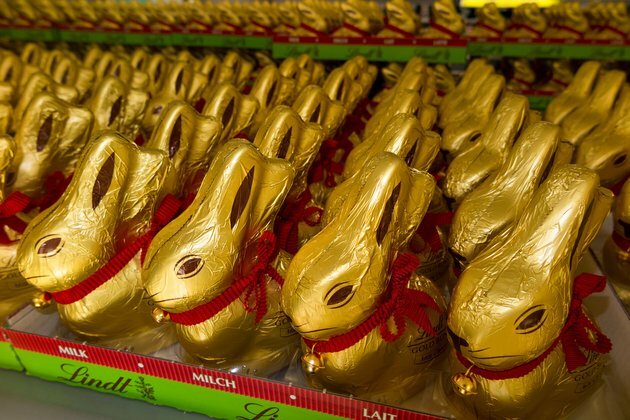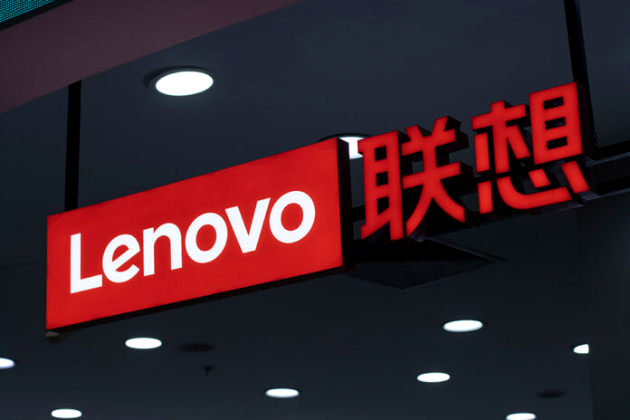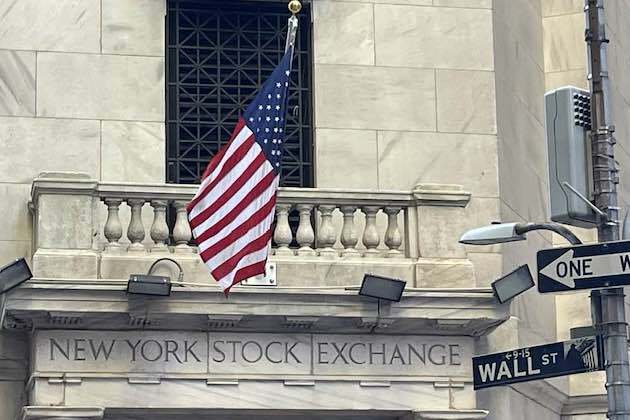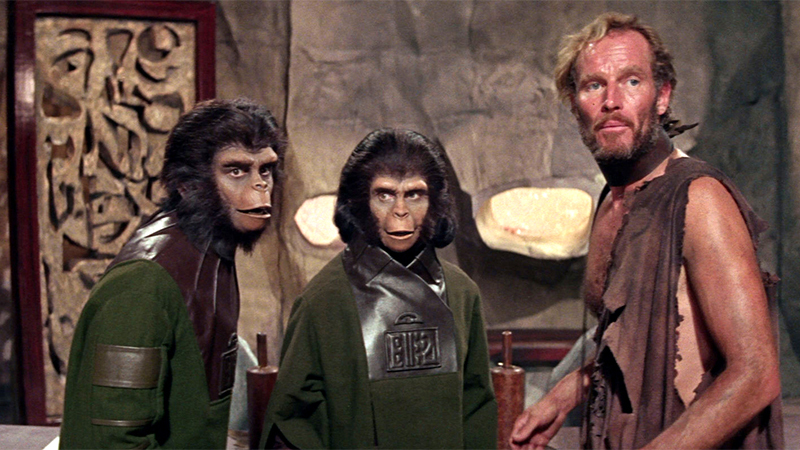Lindt's chocolate bunny trademark win shows shape matters to consumers
The Conversation
05 Oct 2022, 00:09 GMT+10

In a move sure to upset chocoholics everywhere, discount supermarket Lidl was recently told to destroy its stocks of chocolate bunnies. The cull was ordered by a Swiss court that decided Lidl's bunny was too close to confectioner Lindt's iconic chocolate rabbit.
Lidl was sued by Swiss confectioner Lindt & Sprüngli for selling a golden foil-wraped chocolate bunny that Lindt felt looked very similar to its own product. The Swiss federal supreme court ruled that the Lindt Gold Bunny is a valid registered "shape" trademark. As such, other companies can now be barred from replicating this shape when selling chocolate products in Switzerland.
Lindt has been selling a milk chocolate bunny wrapped in gold-coloured foil with a red ribbon and a bell around its neck since 1952. It had registered two 3D trademarks for the product in Switzerland, one in black and white and the other in gold, brown, red.
This case hinged on the distinctiveness of the shape of Lindt bunnies. European law says that companies can only register something as a trademark - and therefore protect it from imitation - if it allows consumers to distinguish the specific product from those of competitors.
But Lidl argued that the shape of Lindt bunnies is commonplace and non-distinctive, so it should not qualify for registration. The Swiss court based its decision that the Lindt bunny shape is a valid trademark on consumer surveys that show shoppers unequivocally associate that shape with Lindt.
This is not the first time the Lindt bunny has ended up in court. Heilemann, a competitor in Germany, started selling golden bunnies in 2018 causing the Swiss chocolatier to sue for trademark infringement.
Lindt's strategy was slightly different in this case, focusing on protecting the colour of the packaging rather than its shape. It claimed that the specific golden shade of the foil wrapping is distinctive enough to be protected as a trademark with respect to chocolate bunnies.
The German court agreed, again relying on a consumer survey to which 70% of respondents said the golden shade in question called to mind Lindt's products. The court took into account Lindt's extensive and successful use of this shade and its acquired distinctive character.
The Lindt bunny hasn't always come out on top, however. An earlier 2012 ruling by Europe's highest court found that the combination of the Lindt Gold Bunny shape and colours (including the pleated red ribbon and attached bell) were not sufficiently different from the way other chocolate products are wrapped, especially rabbits, to warrant an EU trademark.
The shape of things to come
Trademark disputes over the shape of products occur frequently. In many cases though, courts find shapes to be too commonly used in a specific market to be protected as trademarks.
Kit Kat chocolate bars, for example, were the subject of efforts by food producer Nestle to trademark its four-fingered 3D shape. In the UK, confectioner Cadbury challenged this attempt, successfully claiming that the shape lacked distinctive character. A similar decision was reached by European courts.
Drinks giant Coca Cola even failed to trademark a recent update of its coke bottle because the shape did not produce a clear and unmistakable impression of exclusively being linked with the US beverage giant. Of course, the original Coca Cola bottle shape is widely associated with the drinks company and is therefore already registered as a trademark in many countries.
Its attempt to register an updated version in plastic, metal and glass as a trademark was rejected in 2014. EU courts said the new version was "devoid of any distinctive character" and not, as Coke tried to argue, "a natural evolution of its famous iconic bottle" (pictured below).
This is obviously not to say that the shapes of products are difficult to protect. Several have been registered in different countries.
For example, the pyramid shape of Toblerone, believed to be a replica of the Alps' Matterhorn mountain, is a registered trademark in various jurisdictions and is owned by the US company Mondelez. This was enforced in the UK several years ago when a competitor launched a similarly shaped chocolate bar it called Twin Peaks.
The familiar shape of the Ferrero Rocher chocolate praline and four of its transparent packaging types have also been successfully registered as trademarks in several countries. This is because the shape is well-known to consumers (again, as revealed by surveys) and the company has a long history of using imagery of these items to distinguish its products.
Protecting consumers
Non-distinctive shapes usually cannot be registered as trademarks because the law needs to protect the right of all companies to use shapes that are common. Only signs and symbols that help consumers identify products can be registered and therefore monopolised by one firm.
On the other hand, shapes that have been used regularly and for a long time by a variety of manufacturers should not be protected because they do nothing to help people make educated purchase choices.
Also, the monopoly offered to trademark owners can be perpetual. Registrations can be renewed every ten years as long as fees are paid. So, being able to forever monopolise common product shapes such as chocolate bunnies could have a negative and lasting impact on competition, although decisions can be subject to legal challenge.
Trademark disputes about product shapes will keep happening and courts should continue to use consumer surveys to come to decisions about who, if anyone, owns a certain product shapes. As we have seen, this won't prevent judges from different jurisdictions from reaching different decisions over the same cases, but it will at least keep consumer protection uppermost in mind when making these judgements.
Authors: Enrico Bonadio - Reader in Intellectual Property Law, City, University of London | Alina Trapova - Assistant Professor in Law and Autonomous Systems, University of Nottingham 
 Share
Share
 Tweet
Tweet
 Share
Share
 Flip
Flip
 Email
Email
Watch latest videos
Subscribe and Follow
Get a daily dose of Japan Herald news through our daily email, its complimentary and keeps you fully up to date with world and business news as well.
News RELEASES
Publish news of your business, community or sports group, personnel appointments, major event and more by submitting a news release to Japan Herald.
More InformationAsia Pacific
SectionChemical plant blast in eastern China kills 5, injures 19; 6 missing
BEIJING, China: Six people are still missing and rescue teams continued their search on May 28 after a powerful explosion at a chemical...
Three boys, 14, 15 and 15 charged with assault and robbery at Barangaroo
SYDNEY, NSW, Australia - A teenage boy has been admitted to hospital, while three younger boys have been arrested, charged, and detained...
Wanted Queenslander Charged After Loaded Gun and Drugs Found in BMW
SYDNEY, NSW, Australia - A 45-year-old Queensland man has been charged after police allegedly discovered a loaded revolver, a prohibited...
Amid losses, Nissan bets on e-Power hybrid to revive US sales
YOKOSUKA, Japan: Facing mounting losses and global restructuring, Japan's Nissan Motor Corp. is turning to its unique e-Power hybrid...
Asia through the ages, penning by Barry Pearton
In the early 1980s, after witnessing opportunities in Asia, Barry Pearton saw a clear gap in Australia's media market. Without nothing...
China’s Lenovo profit plunges 64%, misses estimates sharply
BEIJING, China: China's Lenovo reported a steep 64 percent drop in fourth-quarter profit, falling significantly short of analyst expectations...
Business
SectionUS housing outlook dims as buyers await lower rates, BofA finds
NEW YORK CITY, New York: Rising mortgage rates and economic uncertainty are leaving many Americans unsure about whether to buy a home—just...
Texas bill targets app store access for minors, awaits governor’s nod
SAN FRANCISCO, California: Texas is set to become the first major U.S. state to require Apple and Google to verify the age of users...
US optimism rises after tariff pause, survey shows
WASHINGTON, D.C.: After months of steady decline, U.S. consumer confidence saw a significant rebound in May—buoyed in part by a temporary...
U.S. stocks end day, week, month with mixed performances
NEW YORK, New York - Uncertainty over trade tariffs kept invetsors and tradersv at bay on Friday with the major indices finishing mixed....
Skechers deal sparks wave of take-private talks amid trade turmoil
NEW YORK CITY, New York: As trade policy uncertainty rattles markets and slashes valuations, a growing number of U.S. retailers are...
Volvo cuts 3,000 jobs amid trade tensions and economic uncertainty
FRANKFURT, Germany: Volvo Cars, based in Sweden, is cutting 3,000 jobs to reduce costs as the automobile industry struggles with trade...













